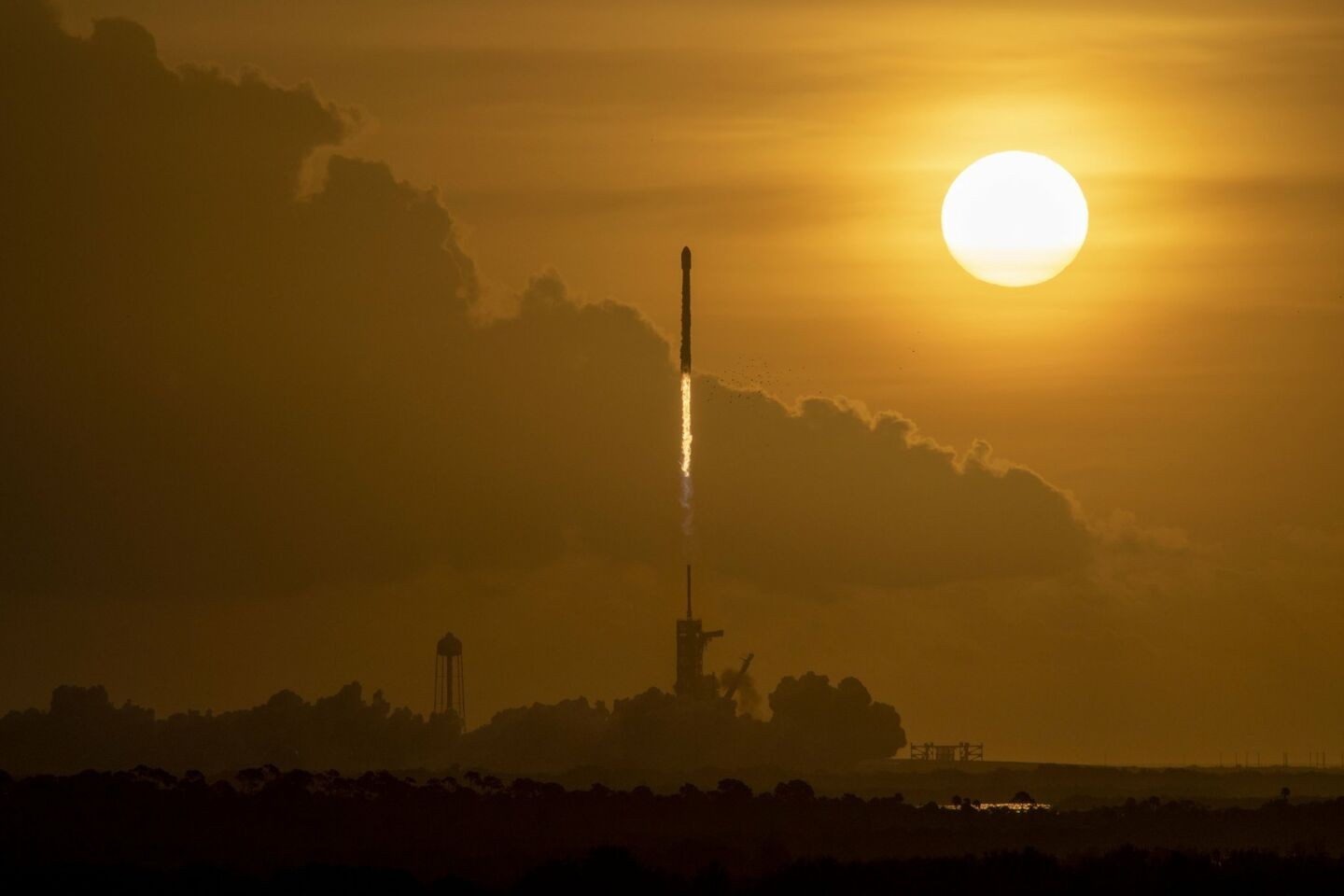The Russian space agency Roscomos has just presented "Amur", its new project for a medium launcher whose first stage will be reusable. In appearance, the rocket is very similar to SpaceX's Falcon 9.
For the past few years, SpaceX has been revolutionizing the aerospace market by lowering the price of putting into orbit thanks to the recovery and reuse of the first stages of its medium launcher:the Falcon 9, everyone knows now. Since then, other public and private agencies have tried to develop similar structures. In particular, we know that China is working on its own reusable booster, as is the Russian state company Roscosmos, which unveiled its "Amur" project to us on Wednesday.
Outwardly, this Amur launcher indeed looks strangely like the Falcon 9, with in particular a fairing wider than the central core of the rocket at its top. That of SpaceX is on the other hand a little larger:5.2 m in diameter against 4.1 m in diameter for the Russian cap. Both rockets also feature a set of grid fins at the top of the first stage and landing legs at the base.
Amur will be a medium launcher powered by five new RD-169 engines not yet developedthat will burn methane . For comparison, the Falcon 9's nine Merlin engines burn a mixture of liquid oxygen and RP-1 (a form of kerosene). It will a priori be able to deliver a little more than ten tons of payload in low Earth orbit (compared to 22.8 tonnes for SpaceX).
As far as prices are concerned, you have to pay an average of 61.2 million dollars to pay for the services of SpaceX and its Falcon 9, while the price of a launch is on average 92 million dollars among its competitors, according to a report by the FAA, the US federal aviation agency. With its Amur rocket, Roscosmos aims for a low price of only 22 million dollars .
On the launch side, remember that the Falcon 9 generally takes off from Cape Canaveral, Florida, before landing on its launch site or on a drone positioned at sea, off the ribs. The Amur booster will be launched from the Vostochny cosmodrome in eastern Russia. It should normally land a little further downstream or possibly at a site to be built along the Sea of Okhotsk. For now, there is no question of landing at sea, as it is particularly rough in the region.
Finally, Roscosmos said that each first stage of Amur will be designed to perform ten missions . This seems ambitious, since even SpaceX does not expect to reach this goal until 2021, and this, after several years of experience.

Note that this Amur rocket would only not ready to fly until 2026 . It is also unclear what type of market the booster will position itself in.
On Twitter, Elon Musk commented on the project developed by Russia. The entrepreneur notably hailed "a step in the right direction “, advising Moscow to aim for “full reusability by 2026 “, which SpaceX should indeed offer. The goal would indeed be to "minimize the cost per useful ton in orbit at the risk of being confined to a "niche market “, according to Musk.